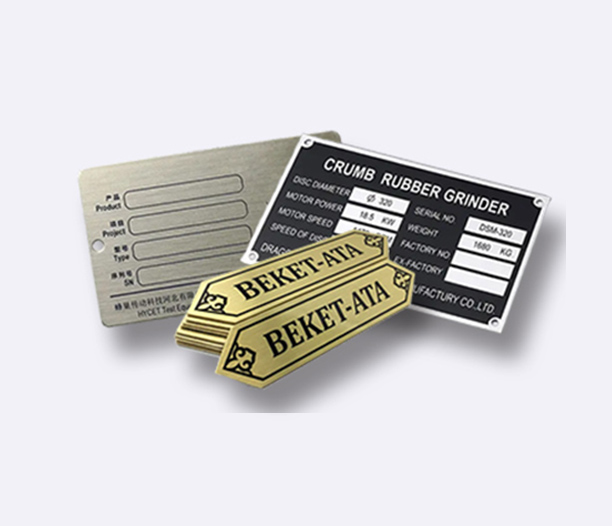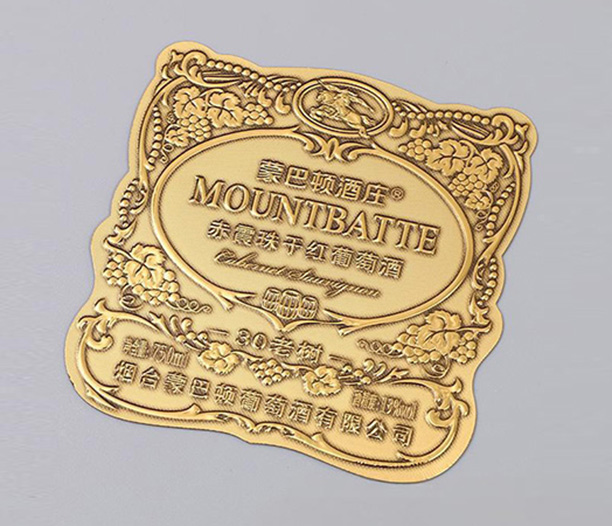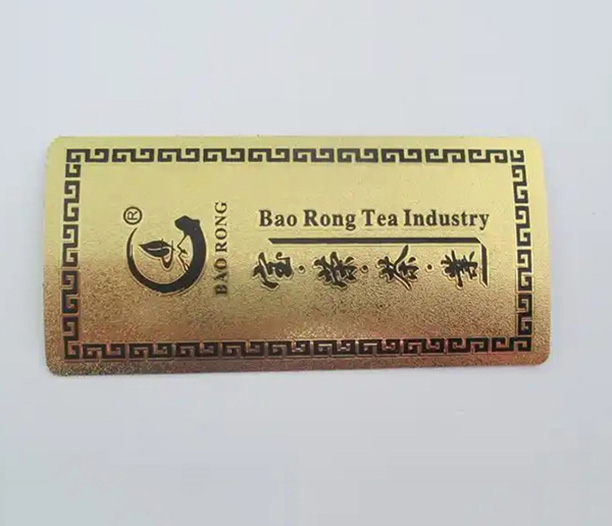In the industrial and manufacturing sectors, the importance of clear, durable, and reliable identification cannot be overstated. Metal labels for equipment are a critical component in asset management, safety compliance, and operational efficiency. These robust tags are designed to withstand the harshest environments, ensuring that vital information remains legible for the entire lifespan of your machinery and assets. From serial numbers and barcodes to safety warnings and compliance certifications, metal labels for equipment provide a permanent solution that paper, plastic, or vinyl labels simply cannot match.
This comprehensive guide will delve into the world of metal labels for equipment, exploring their key benefits, various types, and the multitude of applications they serve. We will also answer the most frequently asked questions to help you select the perfect labeling solution for your operational needs.
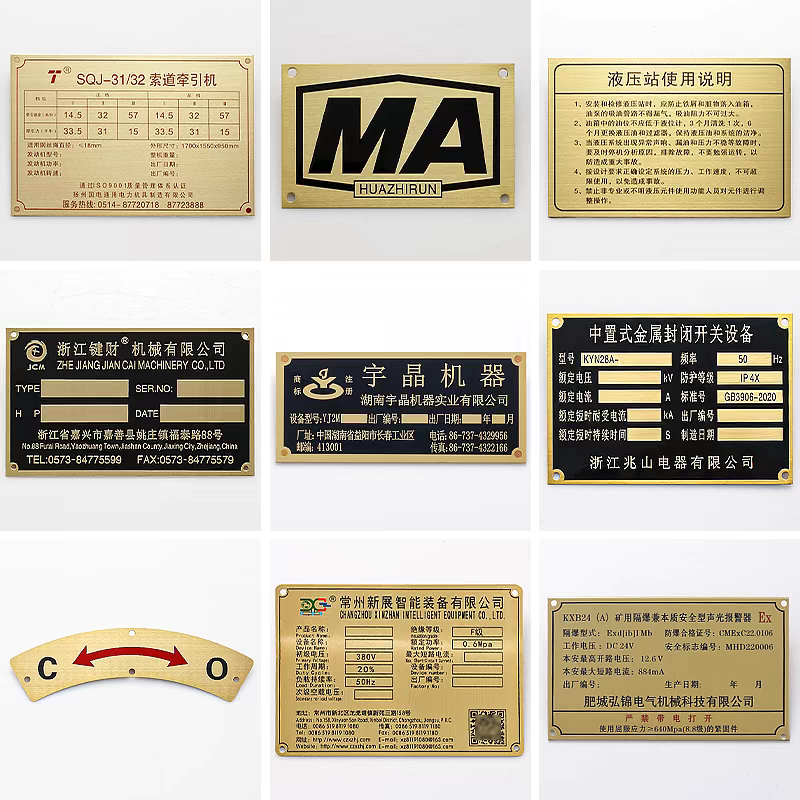
The Unmatched Durability and Longevity of Metal Equipment Labels
When you invest in labeling your valuable assets, you need a solution that lasts. This is where metal labels for equipment truly excel. Unlike their adhesive plastic counterparts, metal tags are engineered to endure.
Resistance to Extreme Temperatures: Whether your equipment operates in a high-temperature foundry or a freezing cold storage facility, metal labels can handle it. Materials like stainless steel and aluminum retain their integrity and legibility through intense heat and severe cold, where plastic labels would melt, warp, or become brittle and crack.
Chemical and Solvent Resistance: Industrial environments are often filled with oils, greases, solvents, and cleaning agents that can quickly degrade standard labels. Metal nameplates for machinery are typically coated with chemical-resistant finishes or are inherently resistant to these substances, ensuring that critical information like part numbers or safety instructions isn't washed away.
Abrasion and Impact Resistance: Equipment labels are subject to physical wear and tear, including scraping, scratching, and impact. A etched or stamped metal tag can take this punishment without losing its readability. The information becomes a permanent part of the metal itself, rather than just a surface print that can be easily scratched off.
Weather and UV Resistance: For outdoor equipment, the elements are a constant threat. Rain, snow, sleet, and prolonged exposure to UV radiation will cause printed labels to fade and peel. Anodized aluminum or stainless steel labels are virtually impervious to these conditions, guaranteeing lifelong outdoor legibility.
This durability translates directly into cost savings. You avoid the frequent, costly, and labor-intensive process of replacing failed labels, reducing downtime and maintenance overhead.
Enhancing Safety and Ensuring Regulatory Compliance
In many industries, proper equipment identification isn't just a matter of organization—it's a legal requirement. Metal labels for equipment play a pivotal role in maintaining a safe workplace and passing regulatory audits.
Safety Warning Labels: Clearly communicating hazards is paramount to preventing accidents. Durable metal safety labels for equipment warn operators of dangers such as high voltage, crushing points, extreme heat, or rotating parts. Their permanent nature ensures the warning is always present, protecting both personnel and the company from liability.
Compliance with Standards: Organizations like OSHA (Occupational Safety and Health Administration), ANSI (American National Standards Institute), and ISO (International Organization for Standardization) have strict guidelines for equipment labeling. Using high-quality, permanent metal nameplates for machinery is often the only way to reliably meet these standards for the life of the equipment. This includes labels for certifications, pressure ratings, electrical ratings, and load capacities.
Asset Identification and Traceability: Regulatory frameworks in sectors like aerospace, medical device manufacturing, and food processing require rigorous traceability of components and assets. A permanently affixed metal tag with a unique serial number or barcode provides an unforgeable record that follows the asset from production to decommissioning.
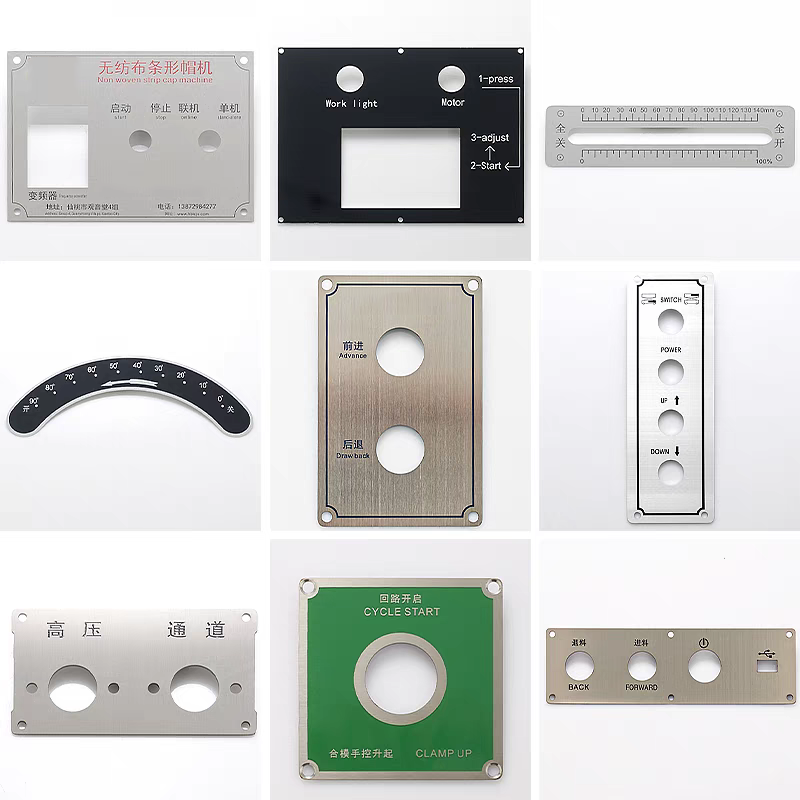
Customization and Versatility for Every Application
A major advantage of modern metal labels for equipment is their incredible versatility. They can be customized to meet virtually any requirement.
Material Choices: The most common materials include:
Anodized Aluminum: A cost-effective, lightweight, and highly corrosion-resistant option. The anodization process allows for coloring the label, creating high-contrast text and graphics.
Stainless Steel: Offers superior strength and resistance to extreme corrosion, making it ideal for harsh chemical environments, marine applications, and food-grade facilities where sanitation is crucial.
Brass and Bronze: Often chosen for their aesthetic appeal on historical equipment, plaques, or in architectural settings, while still providing excellent durability.
Attachment Methods: Metal nameplates for machinery can be affixed in several secure ways:
Adhesive: High-performance industrial adhesives (like 3M VHB tapes) provide a strong, permanent bond without the need for drilling.
Rivets: For the most permanent and tamper-proof solution, rivets offer unparalleled security.
Holes for Screws/Bolts: A simple and effective method for attaching tags to equipment.
Marking Technologies: Information can be added using various durable methods:
Photo Anodization: Creates a high-resolution, embedded image that won't fade or wear off.
Etching: Chemically or laser-etches information into the metal, excellent for barcodes and serial numbers.
Stamping: A traditional method for creating raised or indented characters and numbers.
Screen Printing: Allows for adding color and graphics to the metal surface.
Improving Asset Management and Operational Efficiency
Beyond safety and compliance, metal labels for equipment are powerful tools for streamlining operations and managing assets effectively.
Inventory and Maintenance Tracking: By tagging equipment with a unique metal barcode or QR code, businesses can integrate their assets into a Computerized Maintenance Management System (CMMS). Maintenance teams can quickly scan the code to access the equipment's service history, manuals, and schedule new work orders, drastically reducing downtime.
Lifecycle Management: Tracking the age, usage, and maintenance of equipment is easier with a permanent ID. This data helps in making informed decisions about repairs, refurbishments, or replacements, optimizing capital expenditure.
Loss Prevention: Permanent metal asset tags act as a deterrent to theft. They can be serialized and registered, making it difficult for thieves to resell identifiable equipment and easier for law enforcement to return recovered items.
Common Applications Across Industries
The use of metal labels for equipment is ubiquitous across countless sectors. Some key applications include:
Manufacturing: Labeling production machinery, tools, and assembly lines with data plates, safety warnings, and operational instructions.
Aerospace and Defense: Tracking parts and components with MIL-SPEC compliant labels that must survive extreme conditions.
Medical: Identifying surgical instruments, hospital beds, and diagnostic machines with tags that can withstand rigorous autoclave sterilization.
Energy and Utilities: Marking transformers, valves, pipelines, and power generation equipment that is exposed to the outdoors and harsh chemicals.
Transportation and Logistics: Tagging fleet vehicles, cargo containers, and heavy-duty handling equipment.
Frequently Asked Questions About Metal Labels for Equipment
Q1: What is the best material for outdoor metal equipment labels?
For most outdoor applications, anodized aluminum or stainless steel are the top choices. Anodized aluminum is highly resistant to corrosion and UV fading, while stainless steel (particularly Grade 316) is better for highly corrosive environments like coastal areas or chemical plants.
Q2: How do I ensure my metal nameplate will stay on the equipment?
The best attachment method depends on the surface and the environment. For a smooth, clean surface, a high-bond industrial adhesive is often sufficient. For rough surfaces, high-temperature applications, or where tampering is a concern, mechanical fasteners like rivets or screws are the most reliable and permanent solution.
Q3: Can metal labels be used for barcoding and RFID?
Absolutely. Metal labels for equipment are excellent substrates for barcodes (especially laser-etched) and QR codes. For RFID, special RFID-enabled metal asset tags are designed to function correctly even when attached to metal surfaces, which typically interfere with standard RFID tags.
Q4: Are custom-shaped metal labels available, or are they only rectangular?
Yes, one of the great advantages of metal is its malleability. Manufacturers can die-cut metal labels into virtually any custom shape—round, oval, with rounded corners, or completely unique silhouettes—to fit specific spaces or meet branding requirements.
Q5: How do I clean my metal equipment tags?
One of the benefits of metal tags is their ease of cleaning. For stainless steel or aluminum, simply wiping them with a soft cloth and a mild solvent (like isopropyl alcohol) is usually enough to remove grime, grease, or residue without damaging the label. Avoid using abrasive pads or harsh chemicals that could scratch the surface.
Q6: What information should I include on a metal equipment label?
This varies by application. Common information includes:
Unique Asset ID or Serial Number
Model and Part Number
Company Name and Logo
Manufacturing Date or Installation Date
Safety Warnings or Operational Parameters (e.g., max pressure, voltage, weight)
Compliance Marks (e.g., UL, CE)
Barcodes or QR Codes for scanning
In the world of industrial operations, the small details often make the biggest difference. Metal labels for equipment are a prime example. They are a low-cost, high-impact investment that pays dividends in safety, compliance, efficiency, and longevity. By choosing the right metal tag for your application, you ensure that critical information remains clear and present for the entire operational life of your assets, protecting your people, your productivity, and your bottom line. When selecting a supplier, prioritize those who offer expertise in material selection, customization, and compliance to ensure you get the most durable and effective solution possible.



